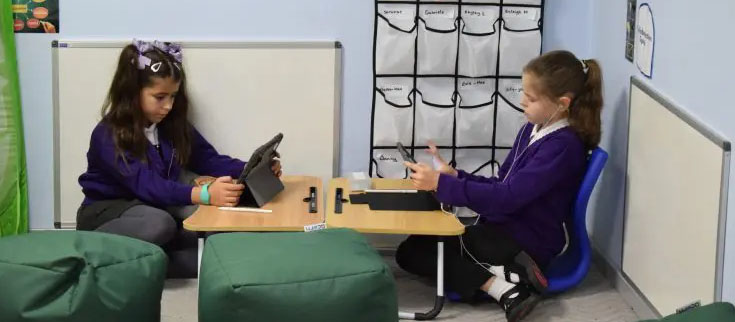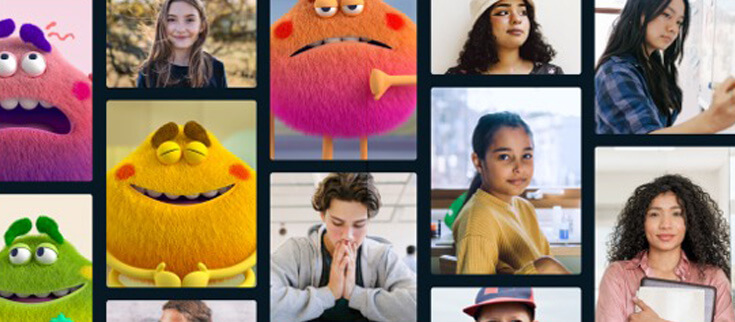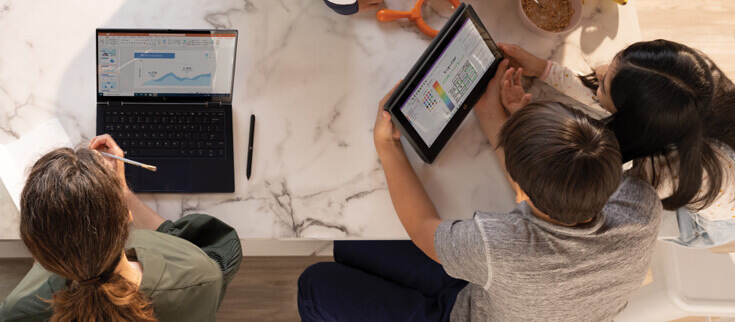-
 Build Self-Awareness & Empathy
Build Self-Awareness & Empathy -
 Grow Emotional Vocabulary
Grow Emotional Vocabulary -
 Identify & Navigate Your Emotions
Identify & Navigate Your Emotions -
 Develop Growth-mindset & Confidence
Develop Growth-mindset & Confidence
Using Reflect
Create impactful check-ins to gain wellbeing insights and build a happier, healthier learning community.
-
Create
- Easily set up regular check-ins for students, staff, and families to understand how they feel about any topic, in any language.
- Host live check-ins on a big screen or share a link to collect responses.
- Have control over who is invited to respond and what they can see.
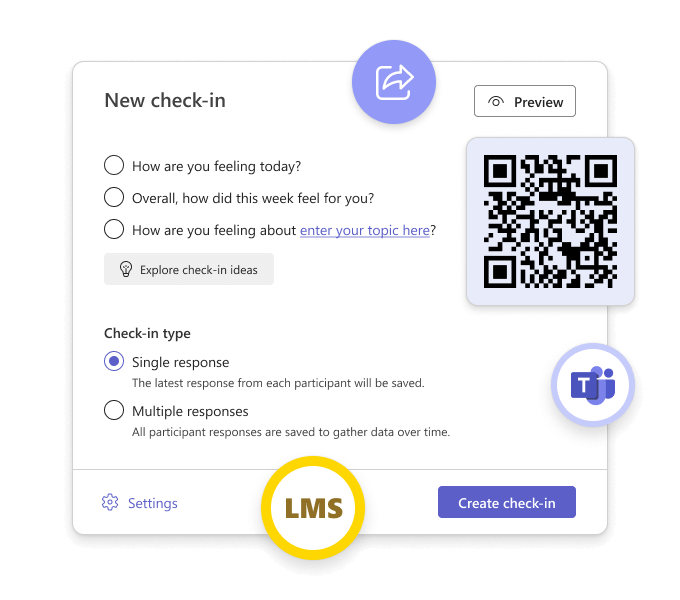
-
Respond
- The Feelings Monster, a research-backed character for all ages, showcases 60 different emotions in an engaging and playful way, assisting learners in authentically identifying and naming their emotions.
- Having a space to share helps build a learning ecosystem where everyone feels safe to make mistakes and grow.
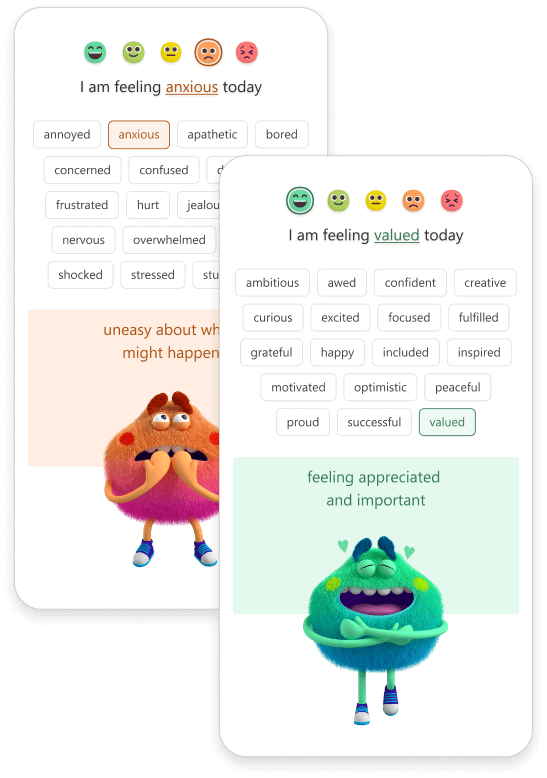
-
Insights into action
- Gain valuable insights into where your learners are excelling and identify areas that require attention.
- Cultivate connection, expression, and learning through data-informed conversations.
- Tailor instruction to learners' needs and interests.
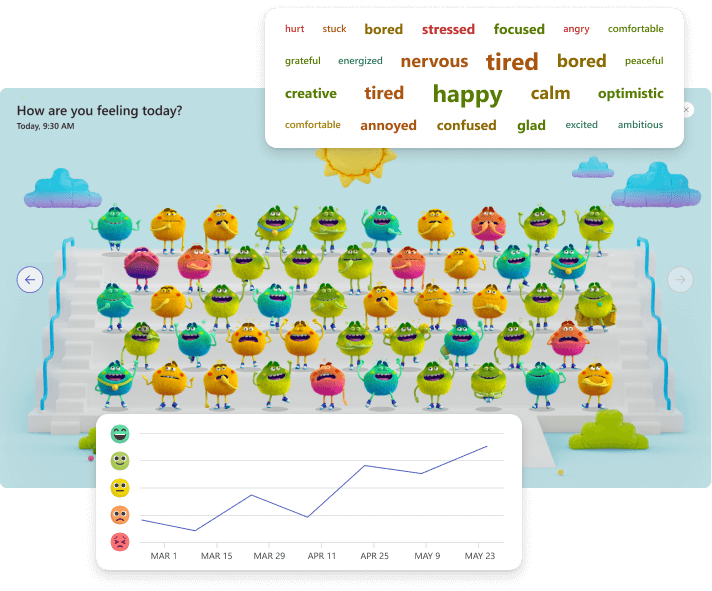
-
Build a culture of wellbeing
- Foster a happier, healthier, and more balanced school with evidence-based resources and strategies.
- Learners can take a brain break with our curated collection of short, inclusive activities designed to promote mental fitness, refresh the mind, and refocus.
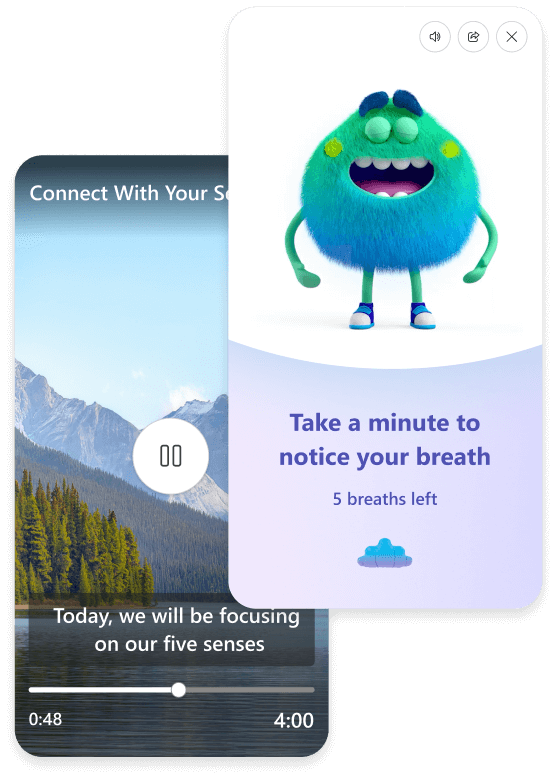
Ready to Reflect?
Sign in to get startedLearn how to get started with Reflect, right in your browser or seamlessly integrated with your favorite apps.



Resources
Reflect supports you seamlessly through every step of the teaching and learning journey, from PreK to HED, integrating with the tech you already use.
Visit the Educator ToolkitAwesome activities, Epic learning!
Incorporate Social-Emotional Learning (SEL) into your classroom with ready-to-use activities, lessons, and materials.
Visit the Activity Hub
 Meditate
Meditate
 Draw
Draw Move
Move Play
Play Music
Music
 Podcasts
Podcasts
 Stories
Stories Worksheets
WorksheetsMake Reflect part of your routine
-
 SEL Check-insOne-on-one attention has an enormous impact on engagement, learning, and well-being of students. Without it, students’ needs can be missed, and emotions can surface in ways that aren’t easy to understand. Make check-ins part of your routine to give each of your students a place to share their feelings and give yourself data to track their status, progress and needs.
SEL Check-insOne-on-one attention has an enormous impact on engagement, learning, and well-being of students. Without it, students’ needs can be missed, and emotions can surface in ways that aren’t easy to understand. Make check-ins part of your routine to give each of your students a place to share their feelings and give yourself data to track their status, progress and needs. -
 Learning progressSelf-awareness and self-management are critical skills for lifelong learning - by providing opportunities for students to reflect on their learning educators not only inform the trajectory of their teaching, but also increase students’ agency in learning. Students can practice asking for help and develop a growth mindset through honestly evaluating their effort, motivation, and progress. It is vital that students have a safe space to develop these skills, as it takes plenty of practice!
Learning progressSelf-awareness and self-management are critical skills for lifelong learning - by providing opportunities for students to reflect on their learning educators not only inform the trajectory of their teaching, but also increase students’ agency in learning. Students can practice asking for help and develop a growth mindset through honestly evaluating their effort, motivation, and progress. It is vital that students have a safe space to develop these skills, as it takes plenty of practice! -
 Educator wellness
Educator wellnessSocial and emotional learning isn't just for kids. Evidence shows that teachers with higher levels of social-emotional competence have more effective classroom management, better retention, and higher academic achievement in their students. However, very little training is provided to support teachers' personal SEL.
To effectively teach SEL skills, educators first need space to reflect personally and recognize their skills and opportunities for growth. Use Reflect to take the temperature of your school ecosystem and ensure that educators' own needs are being met so they can invest the best of themselves in teaching.
Reflect with confidence
With Microsoft Reflect, you can be sure that your data and privacy are secure, and our solution complies with international regulations and best practices.
-
 SecureReflect, as part of Microsoft 365, complies with regional and industry-specific regulations for data collection and use, including GDPR and FERPA.
SecureReflect, as part of Microsoft 365, complies with regional and industry-specific regulations for data collection and use, including GDPR and FERPA. -
 PrivateReflect keeps your data confidential. You have complete control over who is invited to respond to the check-in and what they can see.
PrivateReflect keeps your data confidential. You have complete control over who is invited to respond to the check-in and what they can see. -
 Research-backedWe place significant emphasis on grounding Reflect in research to prioritize the safety and well-being of students, staff, and families.
Research-backedWe place significant emphasis on grounding Reflect in research to prioritize the safety and well-being of students, staff, and families.

